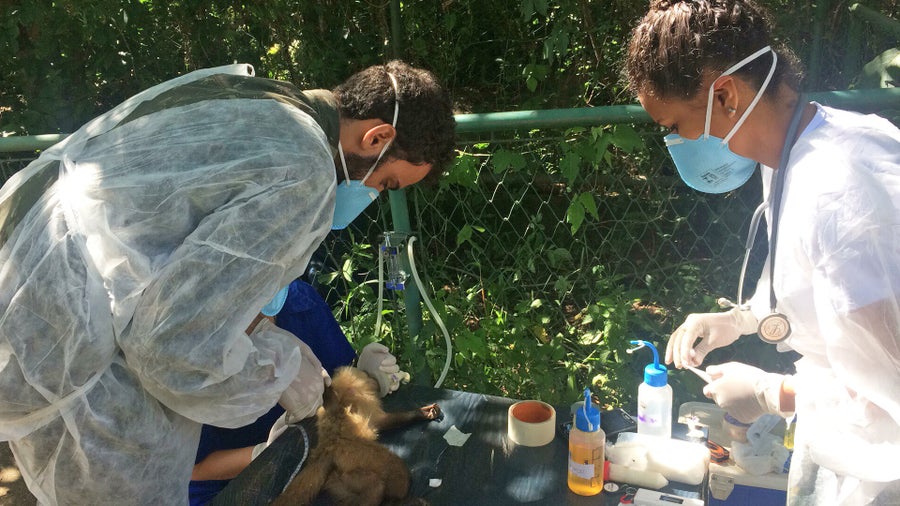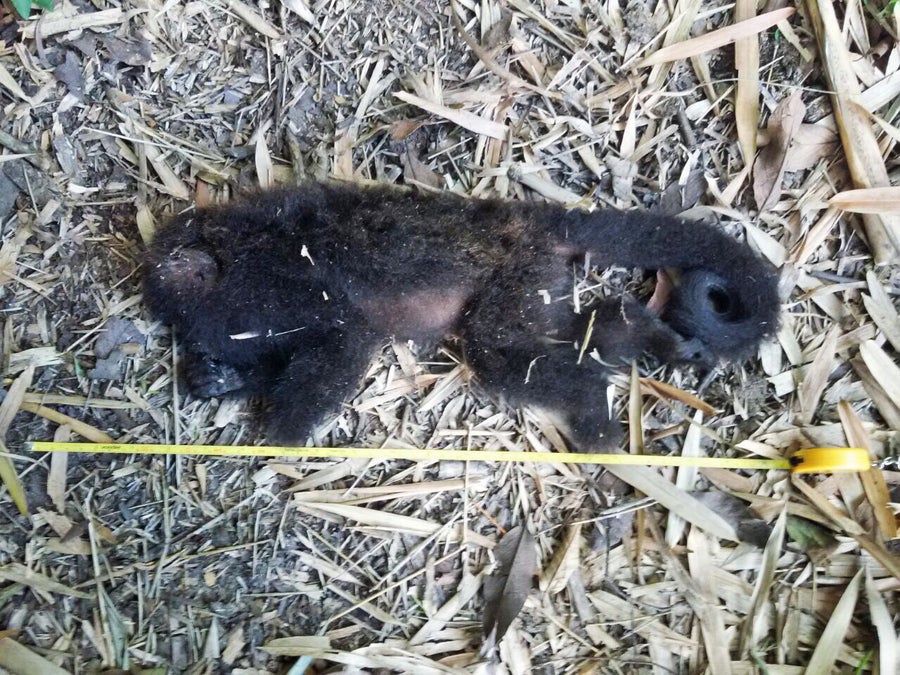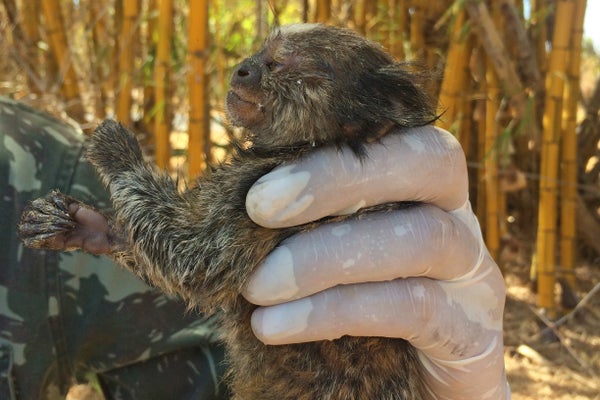Karen Strier knew something was wrong as soon as she entered the patch of Brazil’s Atlantic Forest in the southeastern state of Minas Gerais where she has been studying primates for 35 years. Instead of the usual deafening roar of howler monkeys, some of the most common monkeys in the region, there was an “eerie silence, like when something is wrong,” says the University of Wisconsin–Madison anthropologist. “It was stunning.” The animals had been silenced by the yellow fever virus, which had wiped out most of the local population of 500 howler monkeys.
Since Strier’s visit in 2017 yellow fever has spread amongst monkeys and humans from the Amazon, where it is endemic, to southeastern Brazil, becoming the biggest outbreak of the disease in 80 years. Although epidemiologists consider efforts to vaccinate the human population a success, inoculation is not currently practical for other primates. With the mortality rate reaching 90 percent in some of the 15 species of monkeys affected (including howler monkeys), the outbreak piles on top of the other threats such as habitat loss and poaching. It also raises concerns about long-term impacts on the ecology of the fragile Atlantic Forest, where only 12.4 percent of the original canopy remains—a deforestation process that has been ongoing since the first Portuguese explorers arrived at the beginning of the 16th century. “Once yellow fever reaches a forest, there’s nothing we can do to detain it. When that happens, we can simply watch how it spreads,” says biologist Sérgio Lucena Mendes, a professor at the Federal University of Espírito Santo and director of the National Atlantic Forest Research Institute who is working on measures to control the outbreak and save the monkeys.
Large Losses
On supporting science journalism
If you're enjoying this article, consider supporting our award-winning journalism by subscribing. By purchasing a subscription you are helping to ensure the future of impactful stories about the discoveries and ideas shaping our world today.
Like Zika, yellow fever is a virus transmitted to humans by infected mosquitoes. Since the 1980s it has periodically moved from the Amazon into rural regions of southern Brazil, staying active for two to three years before subsiding. When this last happened in 2008–09 the virus left a trail of more than 2,500 dead monkeys of various species, according to government estimates.

Researchers collect and examine a dead northern brown howler monkey (Alouatta guariba ssp. guariba). Credit: Danilo Simonini
The latest outbreak in the southeast, which started in 2016, has been far more widespread and deadly to primates. Brazil’s Ministry of Health reported 4,575 suspected monkey deaths from yellow fever since May 2017, with 732 confirmed cases. Mendes estimates, though, that only 5 percent of all monkeys that perish from yellow fever are collected and registered (as most die out of sight in the forests) and suggests the official numbers are a major undercount.
Some of the monkey species susceptible to the disease have seen far more deaths than others, although the death rates are not known for every species. Black and brown howler monkeys—known for their booming guttural calls—are by far the most afflicted, with mortality rates reaching 90 percent in infected individuals, Mendes says. Eleven of the 15 affected species are under some threat of extinction, including the endangered lion tamarin and critically endangered muriqui (aka woolly spider monkey).
Scientists are still struggling to explain the rapid spread of the virus during this latest outbreak, as it swiftly leapfrogs among fragmented forest patches. The most feasible hypothesis—according to unpublished research by epidemiologist Cristina Possas and entomologist Ricardo Lourenço de Oliveira, both of the Oswaldo Cruz Foundation (Fiocruz), a public health research institution in Rio de Janeiro, Brazil—is a combination of “complex biological, social and ecological changes in the last decades” that promoted a “significant increase in mosquito and monkey densities and their contacts with humans.”
Recent genomic tests have shown the virus has undergone mutations that could be related to its ability to infect and replicate in mosquitoes and monkeys, Lourenço says. Warmer temperatures could also have sped replication of the virus in its mosquito hosts, the researchers add. Those higher than normal temperatures, along with increased summer rains in recent years, may have also led to an increase in suitable habitats for mosquito larvae, so there could be more mosquitoes around to spread the disease. More people are also moving to, and visiting, the forest ecosystems where monkeys dwell. Unlike monkeys and mosquitoes, humans can travel large distances over short periods of time and are often asymptomatic when infected with yellow fever, making them a key vector for shuttling the diseases between forests and urban areas, according to Possas and Lourenço.

A deceased black howler monkey (Alouatta caraya), one of the most common monkeys in southeastern Brazil. Credit: Danilo Simonini
Deforestation and the accompanying loss of biodiversity may also play a role. The majority of registered yellow fever cases in monkeys were noted in small patches of remaining forest, says Marcia Chame, a biodiversity specialist also from Fiocruz. The few animals left must increasingly come together in search of food and habitat, which makes it easier for mosquitoes to bite multiple individuals.
In addition to decimating already threatened species, the outbreak could have ripple effects on the larger ecosystem in complex and potentially counterintuitive ways. For example, when species have robust populations and forests feature a wide variety of species, there is a greater chance mosquitoes will bite animals that are not as susceptible to the virus. “Biodiversity dilutes the transmission of diseases,” Chame says.
To further understand such effects, Strier plans to study how the loss of howler monkeys might affect muriquis, whose population fell by only 10 to 12 percent during the outbreak and might be faring better than other species. “I would expect that now that the forest is less crowded in the absence of howler monkeys, muriquis will have an easier life to find food” in the short term, she says. “But in the long term they might still suffer, because howler monkeys were very important seed dispersers.” If fewer seeds are dispersed with the disappearance of howler monkeys, muriquis could be left with less food. Primates can also act as both prey and predator for other species, so their loss can have ramifications up and down the food chain, says Danilo Simonini Teixeira, a primatologist at the University of Brasilia and former president of the International Primatological Society.
Stopping the Virus
Researchers are now focused on how to protect the surviving primate populations from this and future yellow fever outbreaks. Whereas widespread vaccination of monkeys is impractical, it could one day be deployed in populations confined in parks and forest reserves contiguous to urban areas, as well as in research animals. A pilot study of golden-headed lion tamarins and howler monkeys aimed at developing a vaccine for monkeys is currently in progress at Fiocruz’s Immunobiological Technology Institute (Biomanguinhos), the main producer of yellow fever vaccine in the world, in collaboration with the Rio de Janeiro Primatology Center. Instead of the shots and drops given to humans, “food containing recombinant vaccine, transgenic fruit and other technological alternatives,” could be deployed to administer the vaccine to monkeys, Lourenço says.
Mendes advocates several public policies that can be immediately implemented to curb the spread of the disease and build back diverse primate populations to improve their resilience. More sustained and precise monitoring of animal epidemics is needed, he says, to allow conservationists to step in before the virus hits an extremely endangered population. Maps showing when and where animals have perished would improve the understanding of how fast the epidemic is spreading, the paths it is following and when it is about to hit a forest, Mendes says. Where vulnerable populations are confined to small patches of forest, it could be possible to move the animals to a place not affected by an outbreak. More research is also needed into the ecology of the disease and the species of mosquitoes and other animals that harbor and spread the virus, to better be able to stop that cycle.
Vaccinating the human population is perhaps the most important policy, Mendes says, as it is the best way to stop yellow fever’s spread in all species. Humans travel over much greater distances than monkeys and mosquitoes, and are often unaware they are infected, which makes them a vehicle for the disease.
Working to prevent further deforestation and even reverse the fragmentation of the monkeys’ habitat should also be a priority, Mendes says, because it could allow forests to rebuild biodiversity. Of the areas hit by yellow fever, monkeys are rebounding better “where the forests are more robust,” he says. Chame agrees, noting that if monkeys are “fighting with other monkeys for food, having to migrate through vast distances to eat, they will have no chance” when also fending off the disease. “The greater the quality of the forest, the stronger the chance of survival.”
This story was produced with a reporting grant from the Earth Journalism Network.
